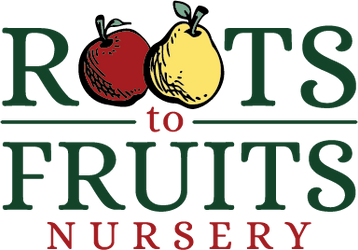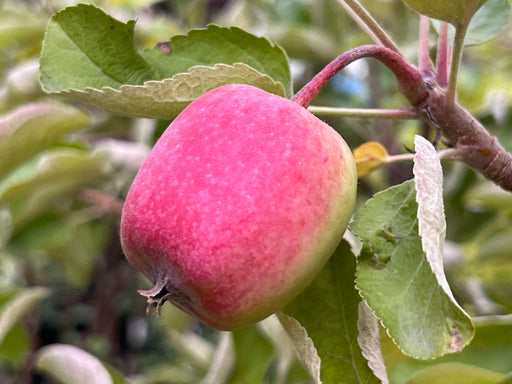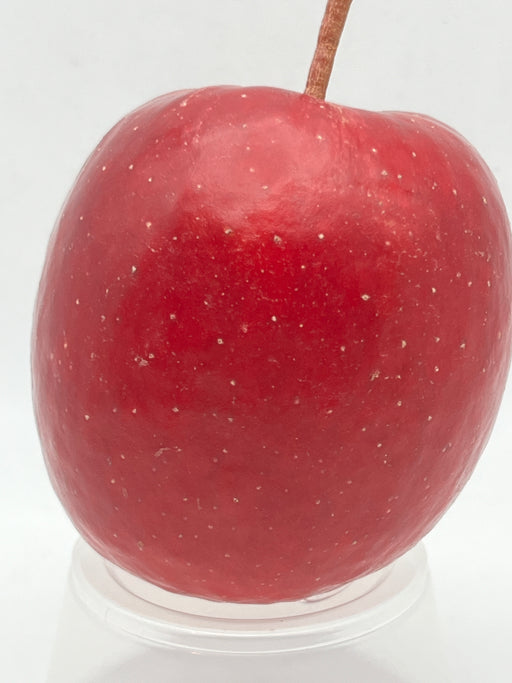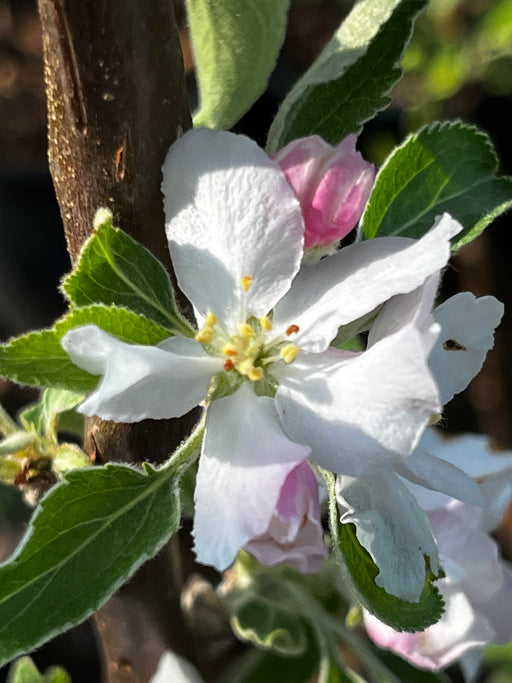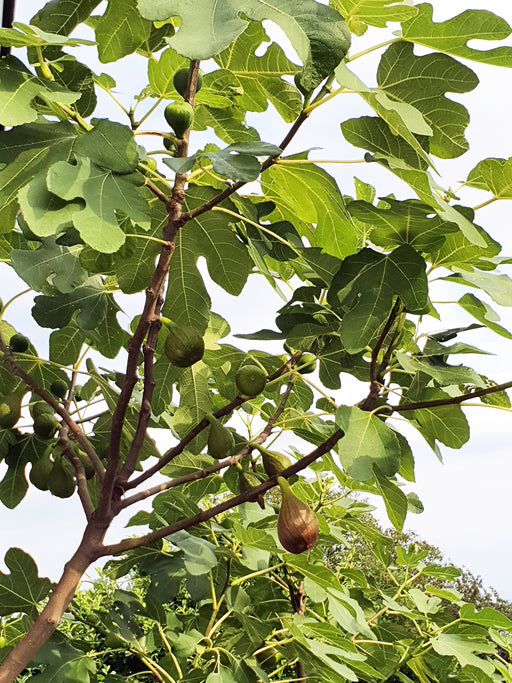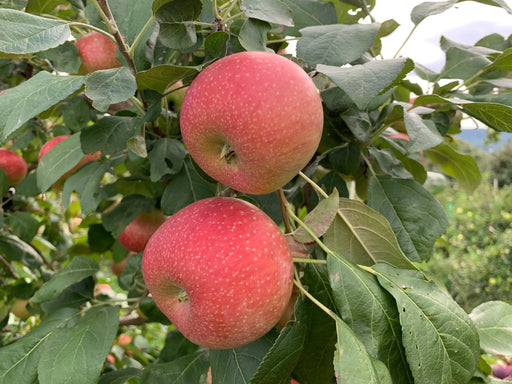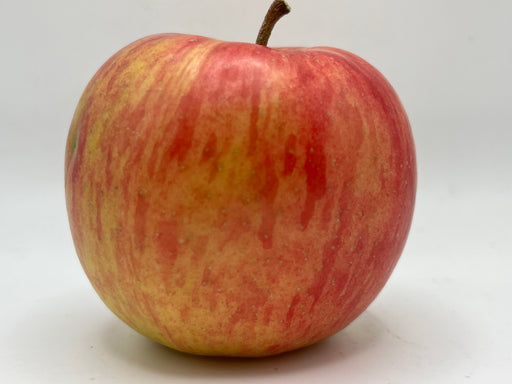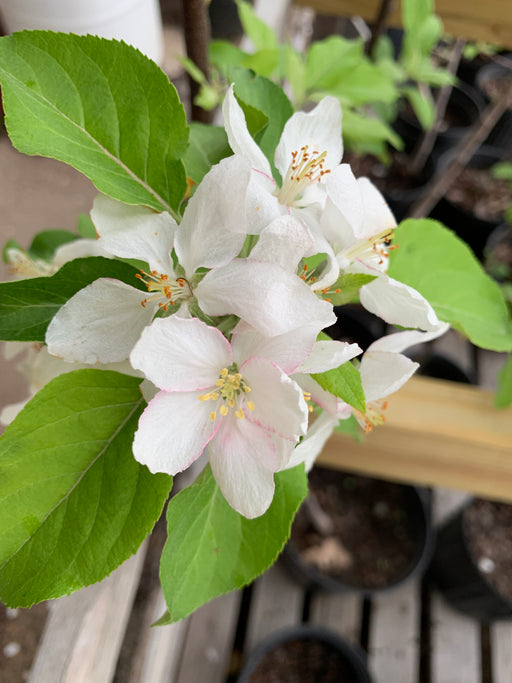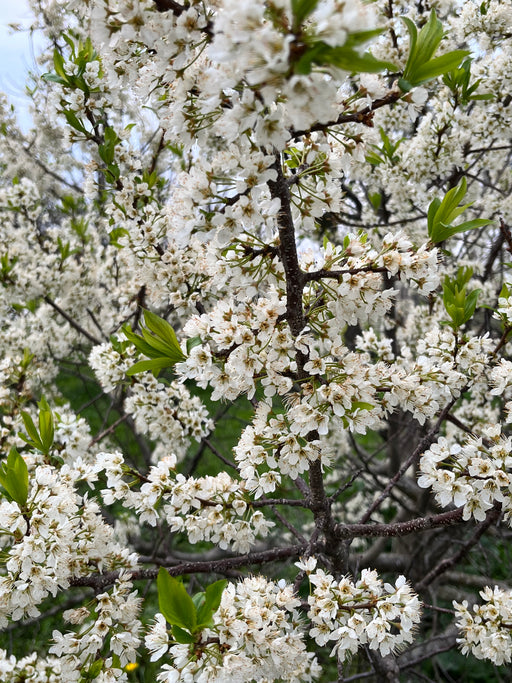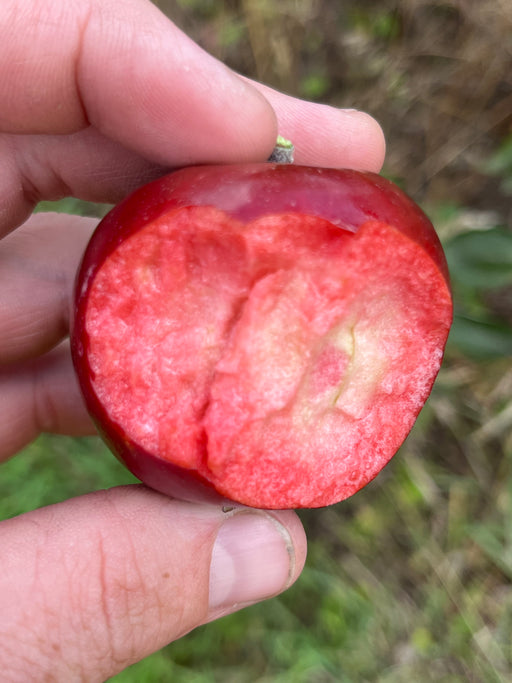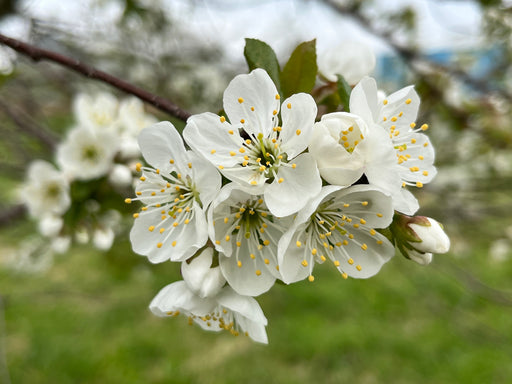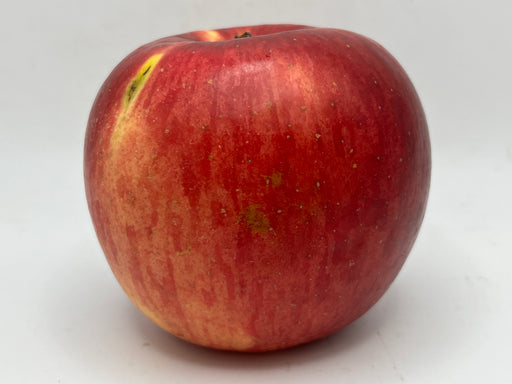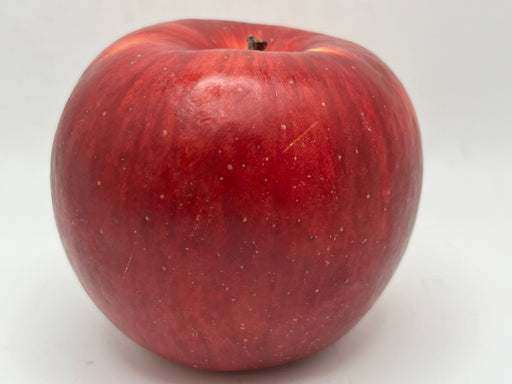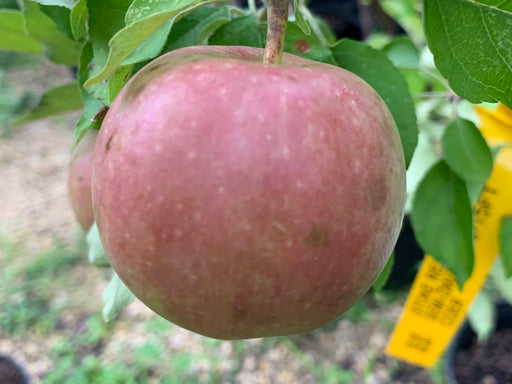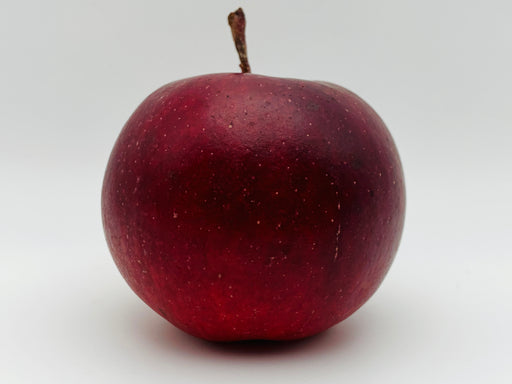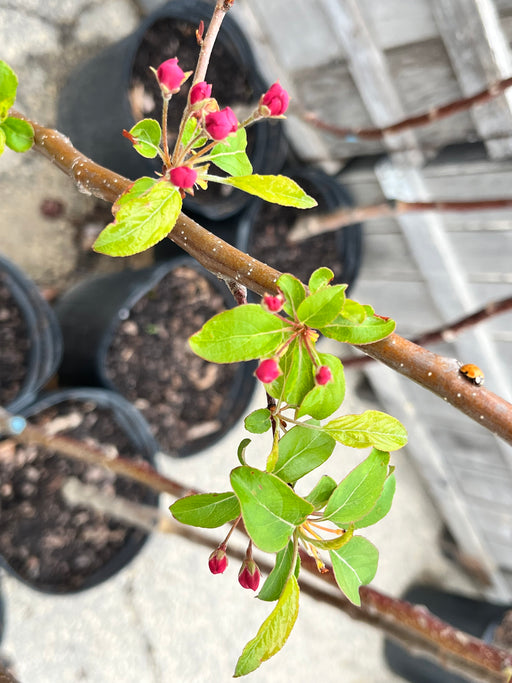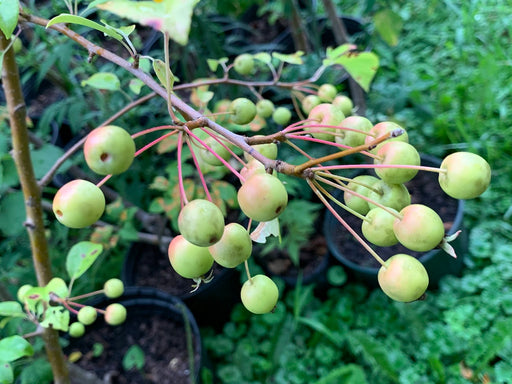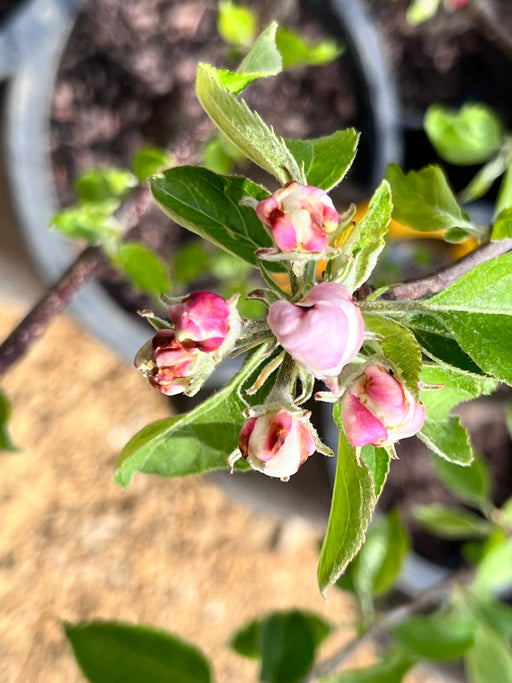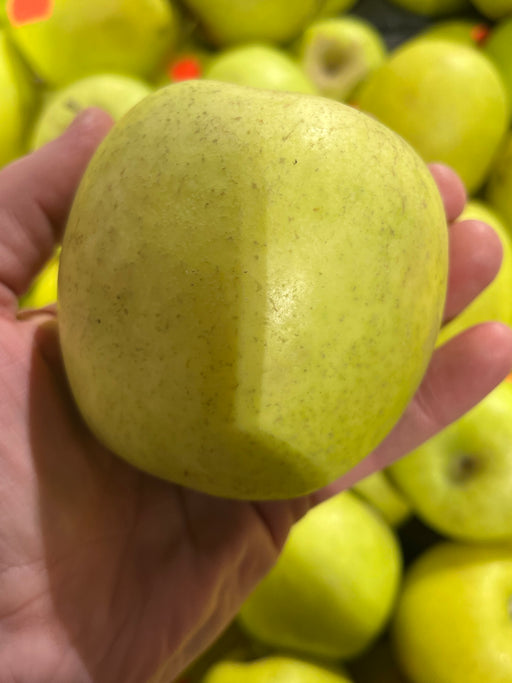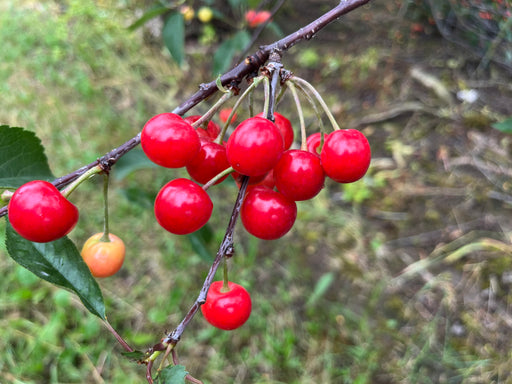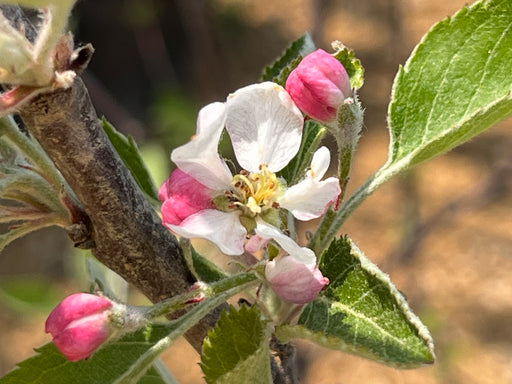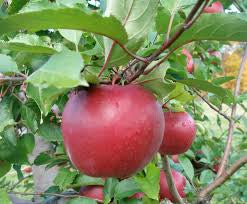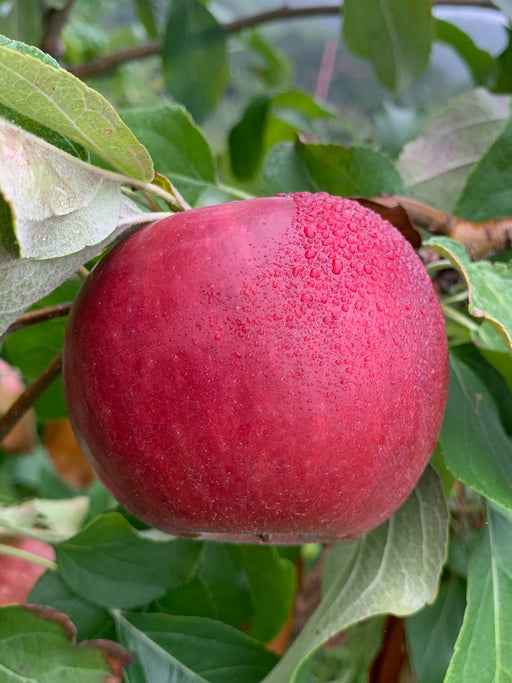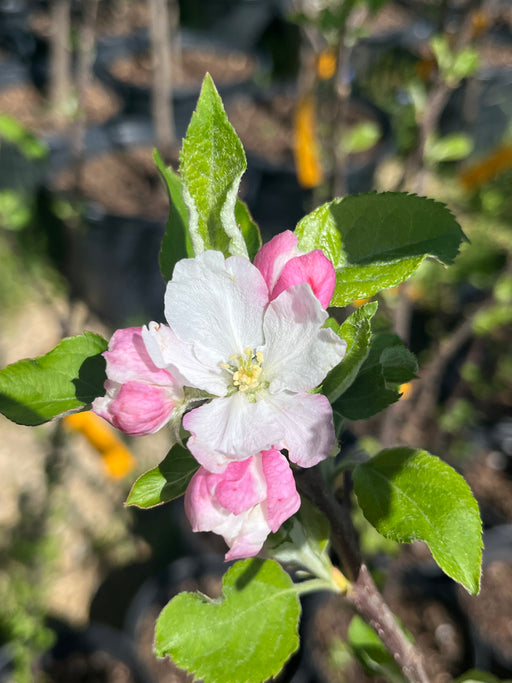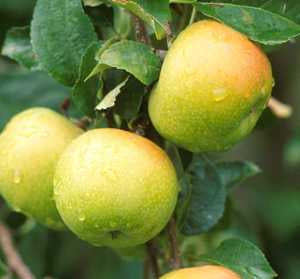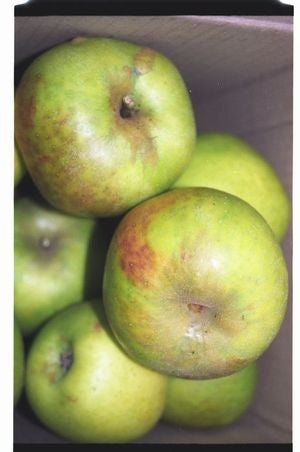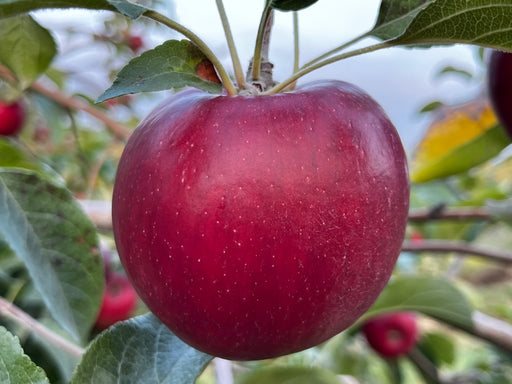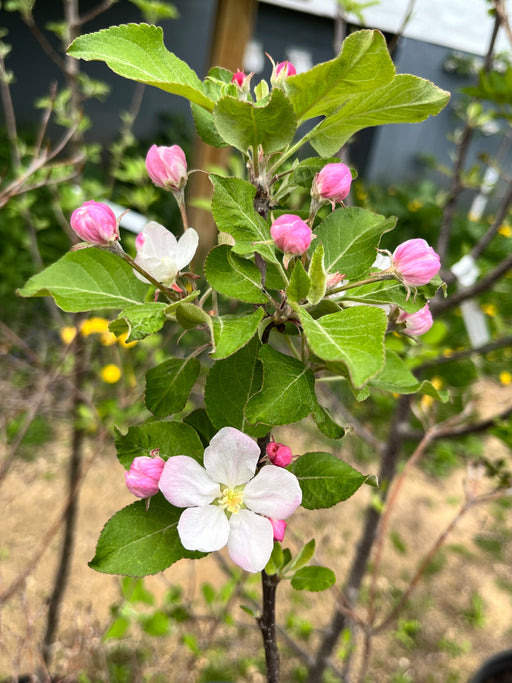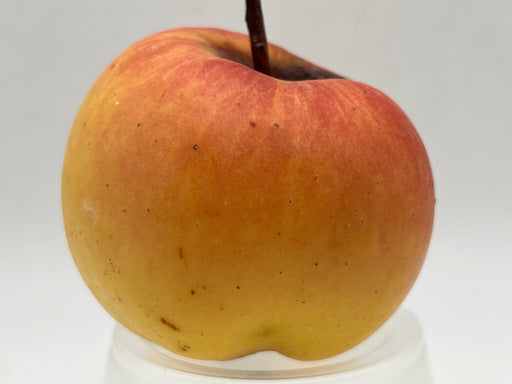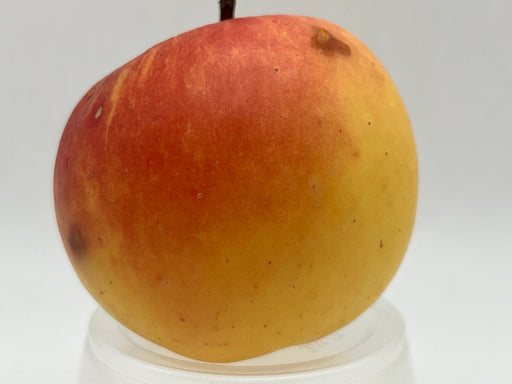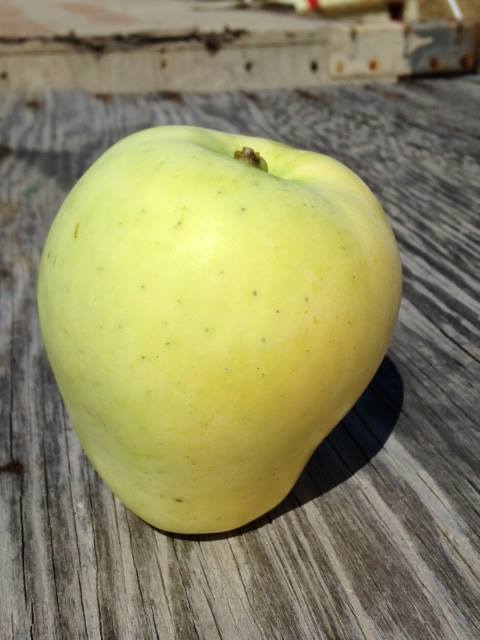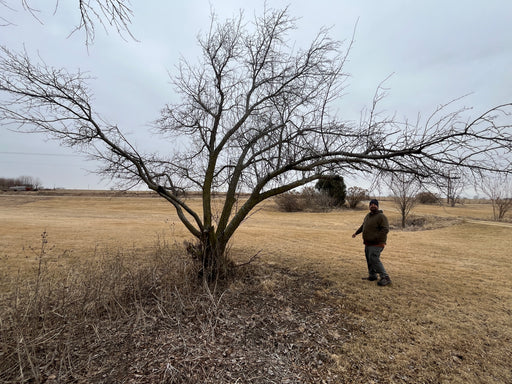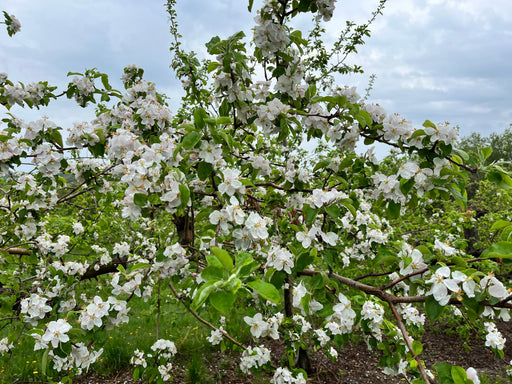Fruit Trees
Our apple trees, like many fruit trees, are propagated by grafting. There are two parts to an apple tree. The scion is the fruiting part of the tree, which gives you the variety of the apple, and the rootstock, which influences the mature size and hardiness of the tree, and determines the time it takes for the tree to fruit. We sell Standard, Semi-Dwarf, Dwarf, and Mini-Dwarf trees that do not require a lot of space and yet, will bear large fruit.
A few key notes on successful planting methods:
- Trees must be planted in well-drained soil
- Six hours of sunlight; full sun preferred
- Stake all trees for the first two years
- Dwarfs must have permanent stakes
- Tree guards should be used
- Plant at least two different apple tree varieties for Cross-Pollination
- Plant disease-resistant trees for less maintenance; we are happy to help make any suggestions you might need
We categorize our apple trees into at least five sizes: Petite, Maiden, Field Ready, Hand Select, and Container depending on the size of the tree. The Petite tree is our smallest graded tree less than 2 years in age; Maiden trees are usually 2 years old and are branchless. These are also called whips and will bear in 2-3 years. A Field Ready tree is 2-3 years old and might have some lateral branching, be thicker above the graft, and will bear in 1-2 years. The Hand Select trees are only about 20% of trees we have and are 3 year old trees, 6-9’ tall and can be heavily branched. You can expect fruiting on a Hand Select tree in about a year.
Story® Inored Apple Tree
Made available to the public in the 2000s, the Story® Apple (or Story® Inored) is a disease resistant variety from the Novadi Corporation in France...
View full detailsNewton Pippin Apple Tree
Description Coming Soon. USDA Zone: 4-8 Mature Heights: EMLA.7 ~15-17' tall; Semi-Dwarf M.111 ~18-21' tall; Semi-Dwarf Sun: Full Sun Bloom Group: ...
View full detailsRed Gravenstein Apple Tree
The Red Gravenstein is a sport of the much older Gravenstein Apple. Originally planted in the 1670s, the Gravenstein apple was used as a cooking an...
View full detailsSelf-Fertile Fig Tree Bundle - 4 Trees
Figs have been popular foods since ancient times and are common across the old world. Figs can now be grown across all continents and make for exce...
View full detailsCreston Apple Tree
Developed in the 1990s by the Pacific Agri-Food Centre in British Columbia and is another offspring of the prodigious Golden Delicious. This apple ...
View full detailsRoseland Red Honeycrisp Apple Tree
Introduced in Minnesota in 1991, the Roseland Red Honey Crisp (RRHC) is a local favorite. The tree is one of the most vigorous and hardy of apple t...
View full detailsApple Season Starter Bundle - Apple & Pear Trees (5 Trees)
Apple season begins in full swing beginning in late summer continuing to late fall. Unsure as to what to plant but want to spread out your harvest?...
View full detailsOtterson Apple Trees
The Otterson is a cross between the Fameuse x Niedzwetzkyana (the ancestor of almost all modern red fleshed apples). A very tart red fleshed crabap...
View full detailsJubileum Cherry Trees
Similar origin story to the Balafon Cherry- first developed in central Hungary and introduced to the US via Dr. Amy Iezzoni. It ripens about 10 day...
View full detailsTsugaru Apple Tree
Released to the public in 1975 from the Aomori Apple Experimental Research Station in northern Japan; it is a cross between the Golden Delicious an...
View full detailsStoke Red Apple Tree
Named for Rodney Stoke in Somerset, England- this is an old cider apple. It finally became popular in the 1920s though the tree was almost certainl...
View full detailsFrettingham Crabapple Trees
A Mid- Late season bloomer, these white blossomed, single petaled crabapples are small and numerous on the tree. Excellent pollinators for apple tr...
View full detailsMutsu Apple Trees
Also known as a Crispin Apple, the Mutsu apple is a cross between the Golden Delicious and Indo apples and originates from the Aomori Prefecture in...
View full detailsCheropugy Bush Cherry
Developed from a specimen from the collection of a fruit collector named Vojtech Slavetinsky in the Czech Republic and is closely related to other ...
View full detailsRed Rome Apple Tree
In 1817, Joel Gillet discovered a seedling tree from a nursery delivery and one of his children planted it near the Ohio River in Rome Township. A ...
View full detailsMonarch Apple Trees
An old English (Essex) variety bred in 1888 by crossing a Peasgood's Nonsuch (probably the coolest apple name ever) with a Dumelow's Seedling and c...
View full detailsYellow Newton Apple Tree
The Yellow Newton is a chance seedling from an older English variety brought to the US in 1755 by Dr. Thomas Walker. The apple grew well in Albemar...
View full detailsBramley's Seedling Apple Tree
One of the longest lived apple trees with the original specimen still standing in an orchard in Nottinghamshire, UK, having been planted as a seedl...
View full detailsCarolina Red June Apple
Early Fruiting apple tree- ripens in July. Bright red and briskly tart. Tree does well in different soils and tends to bloom late. Apples ripen ove...
View full detailsAnna Apple Tree
Very early fruiting apple from Israel that can grow in warmer climates. USDA Zone: 5-10 Mature Height: M.111 ~18-21' tall; Semi-Dwarf Sun: Full Su...
View full detailsCriterion Apple Tree
The Criterion apple was discovered as a chance seedling near Parker, WA in 1968 and is descended from the Golden Delicious, Red Delicious, and W...
View full detailsLodi Apple Trees
Like other early apples, the Lodi Apple is great for apple sauce and purees. It does not store well but can freeze quite easily for use later. It i...
View full detailsStandard Apple Tree Starter Collection
A Standard Apple tree is the largest tree we offer. Either grafted onto an Anotnovka or Seeding rootstocks, these trees can town over other reachin...
View full detailsSierra Beauty Apple Tree
This seedling tree was discovered in the high Sierra Mountains in California and thought to be a left over from the 1840s Gold Rush. Therefore, the...
View full details